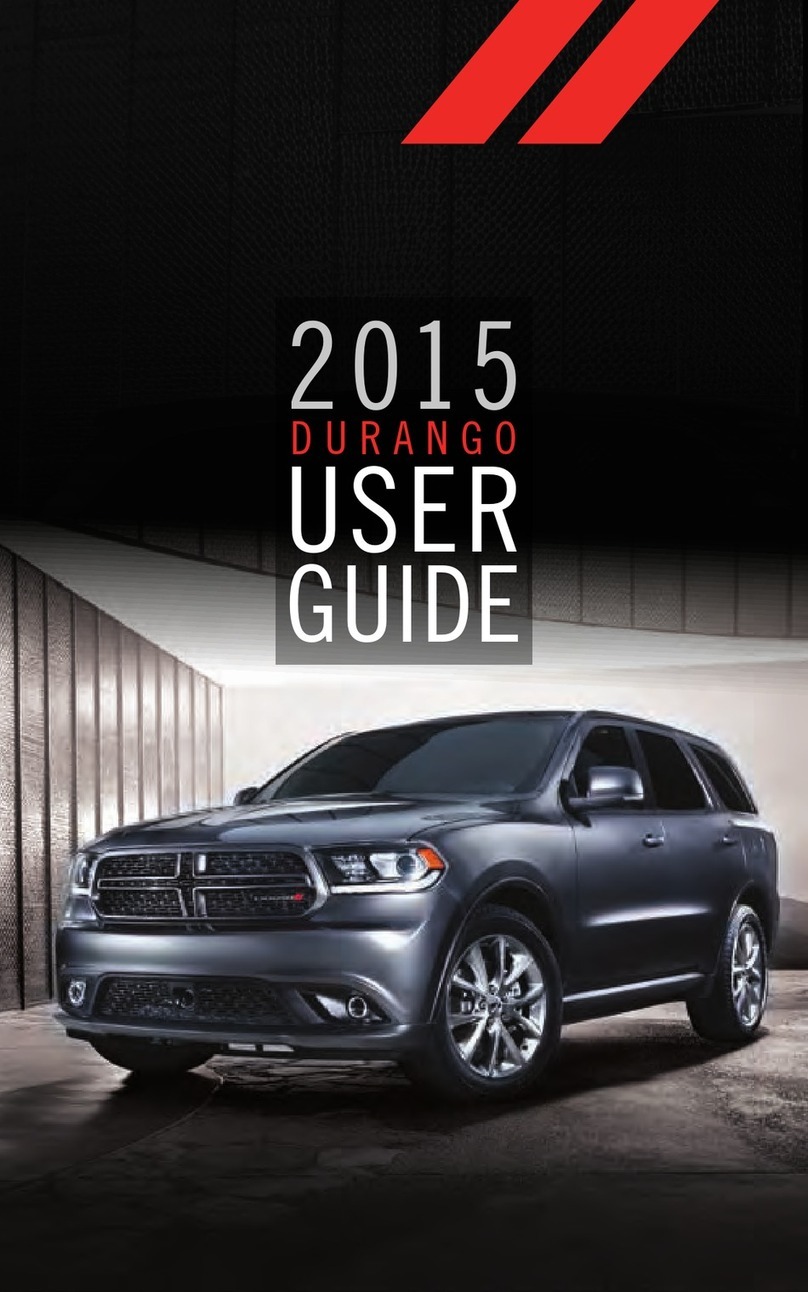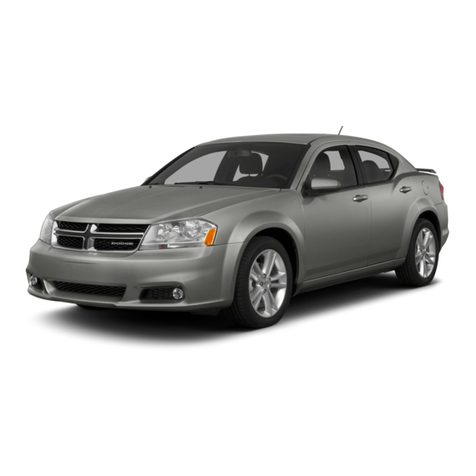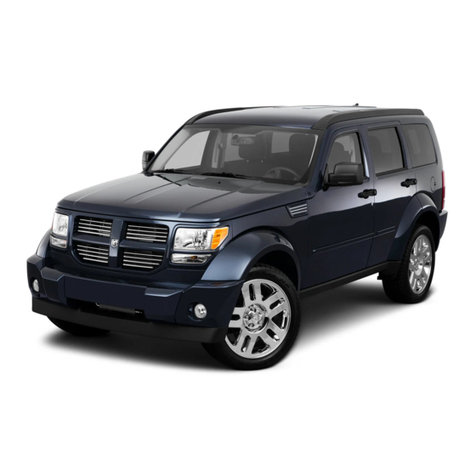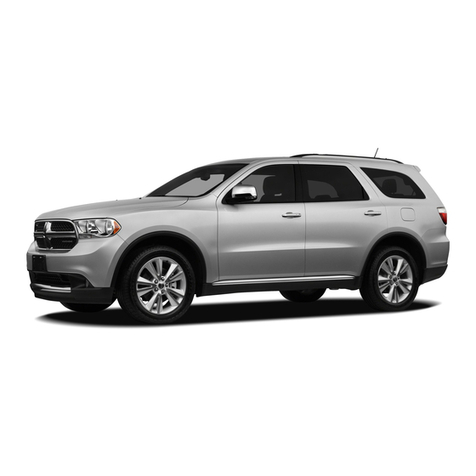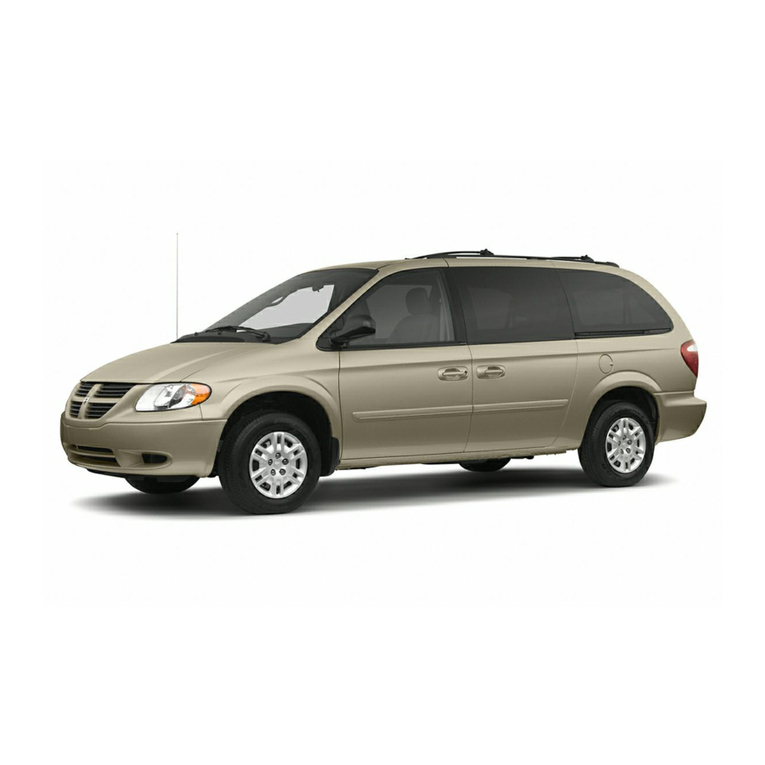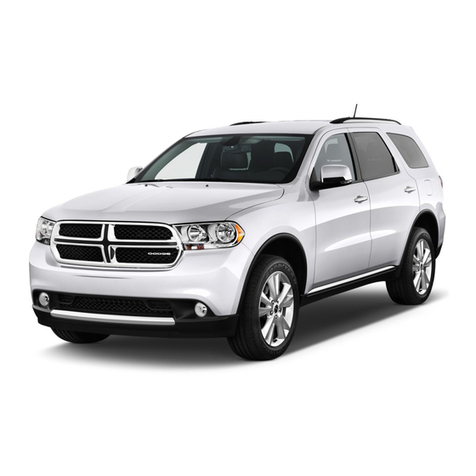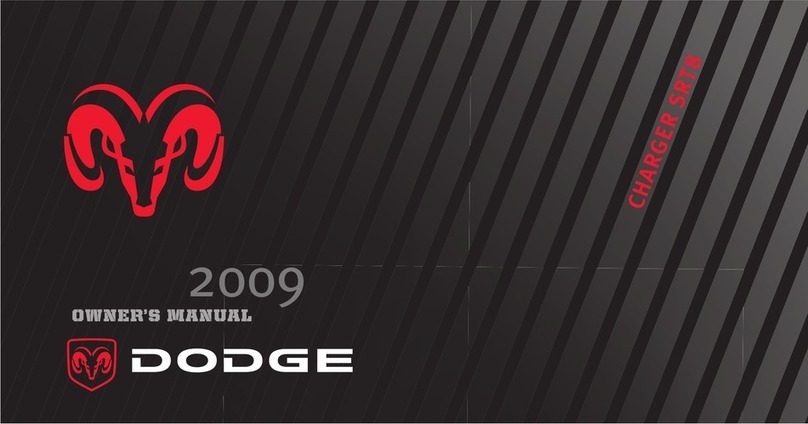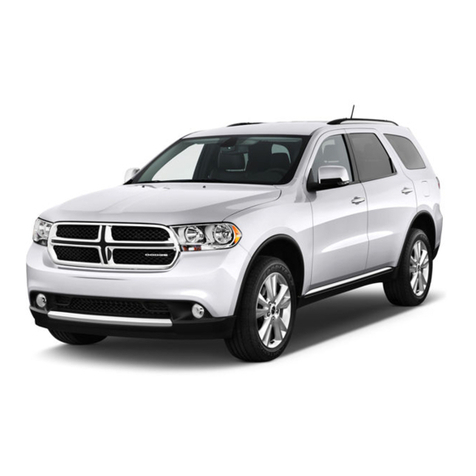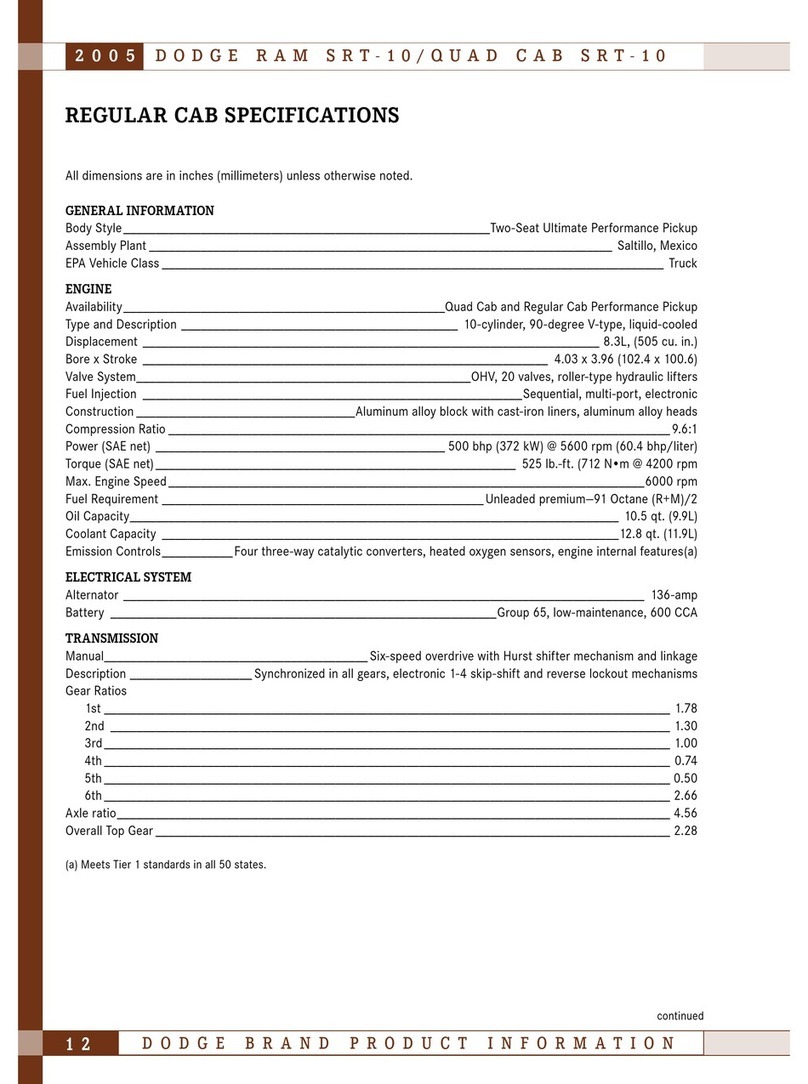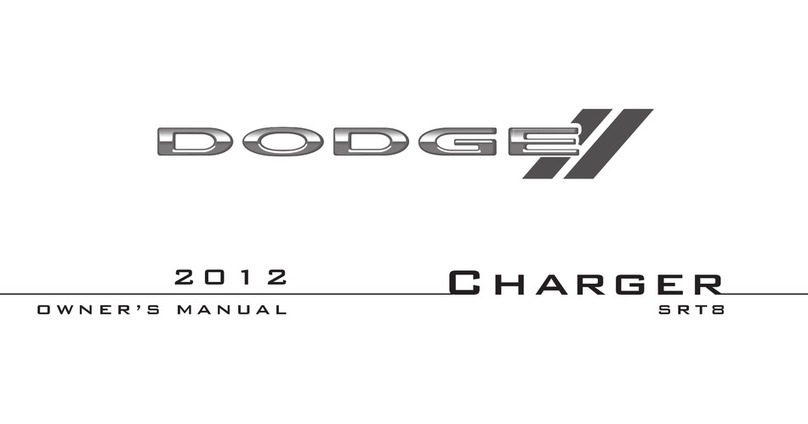
The microprocessor in the ACM monitors the
impact sensor signal and the airbag system electri-
cal circuits to determine the system readiness. If
the ACM detects a monitored system fault, it sends
messages to the instrument cluster on the PCI data
bus to turn on the airbag indicator lamp. A pre-
programmed decision algorithm in the ACM micro-
processor determines when the deceleration rate as
signaled by the sensor indicates an impact that is
severe enough to require airbag system protection.
When the programmed conditions are met, the
ACM sends an electrical signal to deploy the airbag
system components.
The impact sensor is an accelerometer that
senses the rate of vehicle deceleration, which pro-
vides verification of the direction and severity of an
impact. The impact sensor is calibrated for the
specific vehicle, and is only serviced as a unit with
the ACM.
The ACM also contains an energy-storage capac-
itor. The purpose of the capacitor is to provide
airbag system protection in a severe secondary
impact if the initial impact has damaged or discon-
nected the battery, but was not severe enough to
deploy the airbags.
THE AIRBAG SYSTEM IS A SENSITIVE,
COMPLEX ELECTROMECHANICAL UNIT.
BEFORE ATTEMPTING TO DIAGNOSE OR
SERVICE ANY AIRBAG SYSTEM OR RE-
LATED STEERING WHEEL, STEERING COL-
UMN, OR INSTRUMENT PANEL COMPO-
NENTSYOU MUST FIRST DISCONNECTAND
ISOLATE THE BATTERY NEGATIVE
(GROUND) CABLE. WAIT TWO MINUTES
FOR THE SYSTEM CAPACITOR TO DIS-
CHARGE BEFORE FURTHER SYSTEM SER-
VICE. THIS IS THE ONLY SURE WAY TO
DISABLE THE AIRBAG SYSTEM. FAILURE
TO DO THIS COULD RESULT IN ACCIDEN-
TAL AIRBAG DEPLOYMENT AND POSSIBLE
PERSONAL INJURY.
NEVER STRIKE OR KICK THE AIRBAG
CONTROL MODULE, AS IT CAN DAMAGE
THE IMPACT SENSOR OR AFFECT ITS CAL-
IBRATION. IF AN AIRBAG CONTROL MOD-
ULE IS ACCIDENTALLY DROPPED DURING
SERVICE, THE MODULE MUST BE
SCRAPPED AND REPLACED WITH A NEW
UNIT.
The airbag warning lamp is the only point at
which the customer can observe ‘‘symptoms’’ of
system malfunction. Whenever the ignition key is
turned to the ‘‘run’’ or ‘‘start’’ position, the MIC
performs a lamp check by turning the airbag warn-
ing lamp on for 6-8 seconds. If the lamp turns off, it
means that the ACM has checked the system and
found it to be free of discernible malfunctions. If the
lamp remains on, there could be an active fault in
the system or the MIC lamp circuit may be inter-
nally shorted to ground. If the lamp comes on and
stays on for a period longer than 6-8 seconds then
goes off, there is usually an intermittent problem in
the system.
Perform the WARNING LAMP OPEN procedure
in this book to find the cause of any customer
complaint regarding the AIRBAG warning lamp,
such as:
•warning lamp does not illuminate
•warning lamp stays illuminated with no active
DTC’s
The ACM cannot be repaired or adjusted and, if
damaged or faulty, it must be replaced.
3.1.1 DRIVER AIRBAG MODULE (DAB)
The airbag protective trim cover is the most
visible part of the driver side airbag system. The
module is mounted directly to the steering wheel.
Located under the trim cover are the horn switch,
the airbag cushion, and the airbag cushion support-
ing components. The airbag module includes a
housing to which the cushion and inflator are
attached and sealed. The airbag module cannot be
repaired, and must be replaced if deployed or in any
way damaged. The inflator assembly is mounted to
the back of the airbag module. The inflator seals the
hole in the airbag cushion so it can discharge the
gas it produces directly into the cushion when
supplied with the proper electrical signal. The pro-
tective trim cover is fitted to the front of the airbag
module and forms a decorative cover in the center of
the steering wheel. Upon airbag deployment, this
cover will split at a predetermined breakout line.
THE AIRBAG MODULE INFLATOR ASSEM-
BLY CONTAINS SODIUM AZIDE AND POTAS-
SIUM NITRATE. THESE MATERIALS ARE
POISONOUS AND EXTREMELY FLAMMA-
BLE. CONTACT WITH ACID, WATER, OR
HEAVY METALS MAY PRODUCE HARMFUL
AND IRRITATING GASES (SODIUM HY-
DROXIDE IS FORMED IN THE PRESENCE
OF MOISTURE) OR COMBUSTIBLE COM-
POUNDS. IN ADDITION, THE PASSENGER
AIRBAG MODULE CONTAINS ARGON GAS
PRESSURIZED TO OVER 2500 PSI. DO NOT
ATTEMPT TO DISMANTLEANAIRBAG MOD-
ULE OR TAMPER WITH ITS INFLATOR. DO
NOT PUNCTURE, INCINERATE, OR BRING
INTO CONTACT WITH ELECTRICITY. DO
NOT STORE AT TEMPERATURE EXCEED-
ING 93°C (200°F).
3.1.2 CLOCKSPRING
The clockspring is mounted on the steering col-
umn behind the steering wheel. This assembly
consists of a plastic housing which contains a flat,
2
GENERAL INFORMATION
ProCarManuals.com


